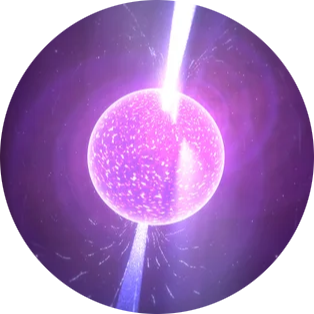Research
 Wave-like Dark Matter
—
If the dark matter consists of light bosons, its occupation number must be extremely large to yield the observed dark matter abundance. Thus bosonic dark matter, produced in the early universe, can behave as a classical field. We can think of it as a matter wave with a macroscopic de Broglie wavelength and a frequency equal to the boson mass. If these bosons have very slight interactions with ordinary matter, for instance, light, nuclear spins, and electron spins, we may have a chance to discover them directly in the laboratory! Currently, I am designing tabletop experiments to look for axions - spin-0 particles that are good candidates for dark matter. With the aid of quantum technologies, such as superconducting radio-frequency cavities, optical cavities, entangled sensor networks, and quantum systems, such as superfluid helium, we are in a golden age to look for the wave-like dark matter.
Wave-like Dark Matter
—
If the dark matter consists of light bosons, its occupation number must be extremely large to yield the observed dark matter abundance. Thus bosonic dark matter, produced in the early universe, can behave as a classical field. We can think of it as a matter wave with a macroscopic de Broglie wavelength and a frequency equal to the boson mass. If these bosons have very slight interactions with ordinary matter, for instance, light, nuclear spins, and electron spins, we may have a chance to discover them directly in the laboratory! Currently, I am designing tabletop experiments to look for axions - spin-0 particles that are good candidates for dark matter. With the aid of quantum technologies, such as superconducting radio-frequency cavities, optical cavities, entangled sensor networks, and quantum systems, such as superfluid helium, we are in a golden age to look for the wave-like dark matter.
 Compact Objects in Astrophysics
—
Neutron stars and white dwarves are dead stars consisting of large numbers of protons, neutrons and electrons. A typical neutron star is as heavy as our Sun, but its density can be 100 trillion times more! Just like electric field can be produced by electric charge, a new force field may be sourced by the large neutron number inside the neutron star. The fluctuations of the force field are the corresponding particles that may escape the star, taking the star's energy away with them. This new cooling mechanism provides one of the most efficient ways to look for these new particles. Additionally, the new field must contribute to the energy and pressure inside the star, potentially causing a change in its macroscopic property such as mass, radius, moment of Inertia. I am working to identify if current and future neutron star and white dwarf observations may lead to new constraints on these new forces.
Compact Objects in Astrophysics
—
Neutron stars and white dwarves are dead stars consisting of large numbers of protons, neutrons and electrons. A typical neutron star is as heavy as our Sun, but its density can be 100 trillion times more! Just like electric field can be produced by electric charge, a new force field may be sourced by the large neutron number inside the neutron star. The fluctuations of the force field are the corresponding particles that may escape the star, taking the star's energy away with them. This new cooling mechanism provides one of the most efficient ways to look for these new particles. Additionally, the new field must contribute to the energy and pressure inside the star, potentially causing a change in its macroscopic property such as mass, radius, moment of Inertia. I am working to identify if current and future neutron star and white dwarf observations may lead to new constraints on these new forces.
 Machine Learning's Application in Particle Physics
—
Given its superb ability in pattern recognition and anomaly detection, machine learning can be powerful in searching for signals from a vast amount of data, such as rare events that may arise from new physics at collider experiments and image deconvolution in astronomical observations. However, to apply machine learning in a robust and reliable way, the systematic of deep neural networks must be properly treated. This becomes especially urgent given the rapid adoption of machine learning in data analysis in all areas of physics. In the past I worked on incorporating normalizing flows in collider event generator to improve the efficiency of the Monte Carlo simulation of the background events. Today I am more interested in quantifying the uncertainty in a deep neural network and how it affects the reconstruction of observables used in collider physics.
Machine Learning's Application in Particle Physics
—
Given its superb ability in pattern recognition and anomaly detection, machine learning can be powerful in searching for signals from a vast amount of data, such as rare events that may arise from new physics at collider experiments and image deconvolution in astronomical observations. However, to apply machine learning in a robust and reliable way, the systematic of deep neural networks must be properly treated. This becomes especially urgent given the rapid adoption of machine learning in data analysis in all areas of physics. In the past I worked on incorporating normalizing flows in collider event generator to improve the efficiency of the Monte Carlo simulation of the background events. Today I am more interested in quantifying the uncertainty in a deep neural network and how it affects the reconstruction of observables used in collider physics.
